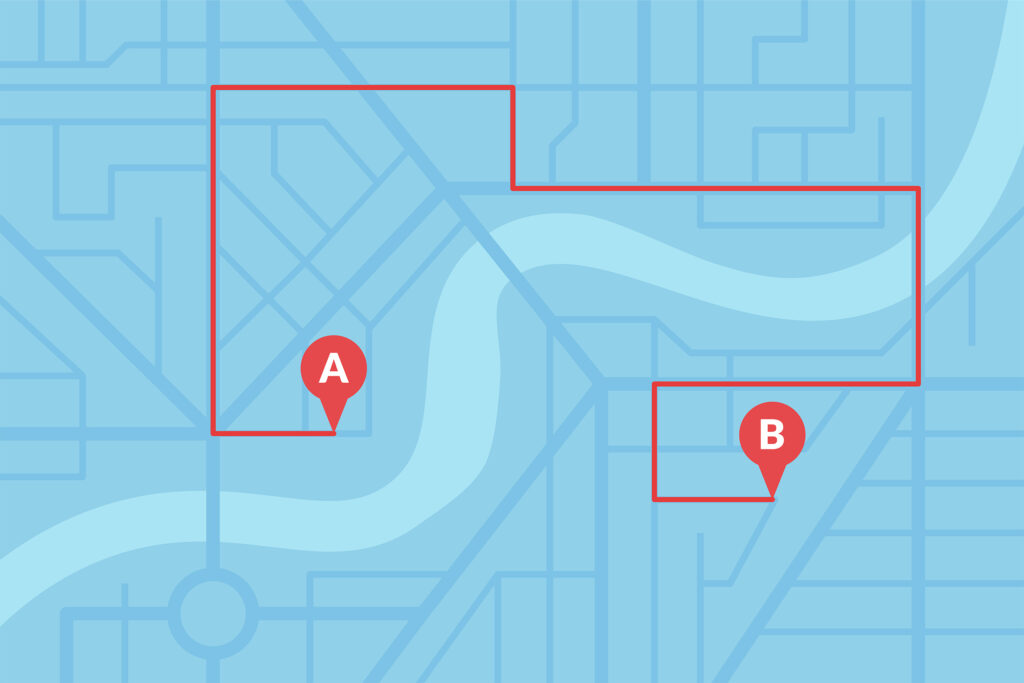
With your newly-gained understanding of electric vehicles, the intricacies of operating EVs and the associated costs, you are ready to start the process of electrifying your own fleet. The transition to electric vehicles cannot happen overnight – in fact, there is still a lot of work to be done. Here, we’ll lead you through the steps to take stock of your current fleet and operations and to select the electric vehicles and infrastructure that are the right fit for you.
The major milestones
There are three main phases that typically go into this planning process:
- Assessing which aspects of your fleet requirements and operations are suitable for electrification
- Identifying which of your current vehicles have a suitable electric version
- Ordering and preparing for the arrival of the new vehicles
We will go into each step in detail in upcoming parts of Lesson 4, but here is a high-level overview of what’s involved in an electric fleet transition.
Step 1: Assess your fleet

Track how your existing fleet runs, including the daily mileage and the type of driving (highway or city) that happens each day to identify which vehicles can be swapped for an electric powertrain.
If you’re already using telematics, the historical data will be a great starting point. If not, the first step here is to gather route data and track your fleet’s duty cycles. There are specialized consultants who can help with assessments for larger or more complex fleets.
Once you have the information on duty cycles for your existing fleet, then it’s time to move on to researching vehicles.
Step 2: Find the EV equivalents

Once you understand the duty cycle of each vehicle — or each type of vehicle — in your fleet, you can start looking at EVs that fit the job description. You’ll need to compare your existing vehicles’ requirements to currently available and future EVs in order to find the ones that fit your needs, including vehicles that offer extended- or long-range battery packs.
There are many new commercial EVs entering the market now, offering fleets an increasingly wider selection to suit their operations. Many fleets plan their electrification over a five- or 10-year timeline, bringing in suitable vehicles as their traditional fleet ages out.
Consult our list of light-duty and medium-duty electric vehicles
As part of this step you will also identify charging requirements for the vehicles you are considering, as well as the electrical infrastructure needed to support it. This means looking at the types and numbers of chargers required for your planned EV fleet as well as anticipating any installation or upgrade costs.
Step 3: Order and prepare
Now you get to actually place orders for the vehicles you want for your electric fleet transition. And yes, you should anticipate long wait times for the vehicles to arrive. In the coming years, it is anticipated that supply will start to catch up with demand as more assembly plants retool for EV production. For instance, the CAMI plant in Ingersoll, Ont., was recently converted from traditional vehicle manufacturing to all-electric production for BrightDrop delivery vans.
For now, however, there is an upside to having an interval between ordering and delivery: it provides you with the opportunity to do the pre-arrival prep work needed for EV operations. If you plan to install chargers at your depot, warehouse or other commercial facility, that infrastructure may take anywhere from a few months to two years to build, depending on whether there’s a need for a significant electrical service upgrade.
“The wait time on vehicle deliveries gives you an opportunity to install charging and reorganize your depot if need be.”
— Steven Wiebe of Innotech Fleets
So which of your fleet vehicles can be transitioned to EV? Learn how to assess your fleet in the next section.
Reproduction of any or all of this material is strictly prohibited without permission. Please contact [email protected] for inquiries. Copyright © 2024 – Electric Autonomy Canada – ArcAscent Inc. – All Rights Reserved
Want to learn more? Sign up or log in so you can track your progress, earn a course certificate and receive exclusive invitations to our live learning sessions.